I am was delighted to be interviewing writer Sarah Ruhl about her work and her memoir Smile: The Story of a Face this on Wednesday. You can set a reminder to watch on YouTube:
Cartoonist Lucy Bellwood drew and wrote about talk here.
I am was delighted to be interviewing writer Sarah Ruhl about her work and her memoir Smile: The Story of a Face this on Wednesday. You can set a reminder to watch on YouTube:
Cartoonist Lucy Bellwood drew and wrote about talk here.

When we were driving back from Florida last week, I took some questions on my Instagram. They’re all still up in my Stories, but I thought I’d share some of them here, too.
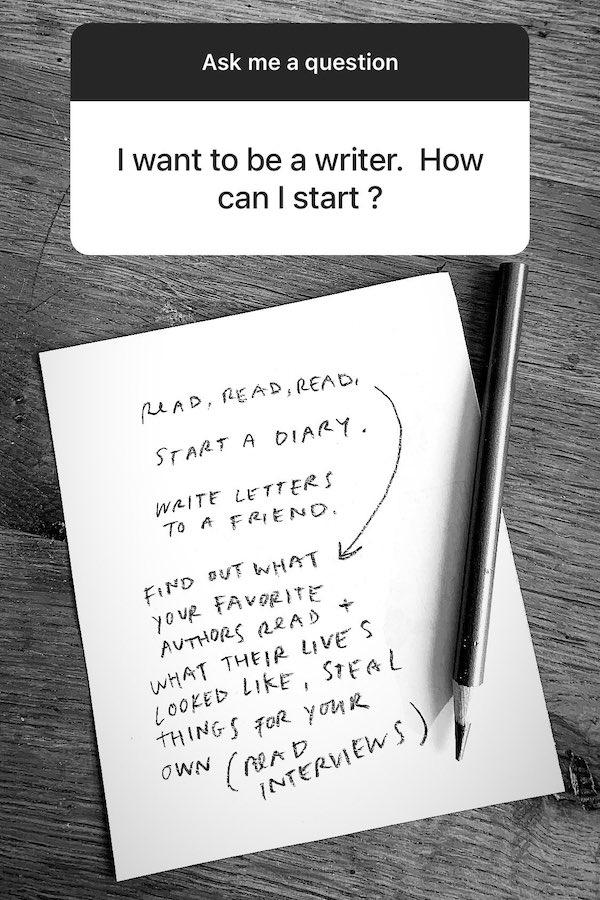
Q&A sessions like this are often a reminder of how many people who follow me on social media don’t necessarily know my books all that well.
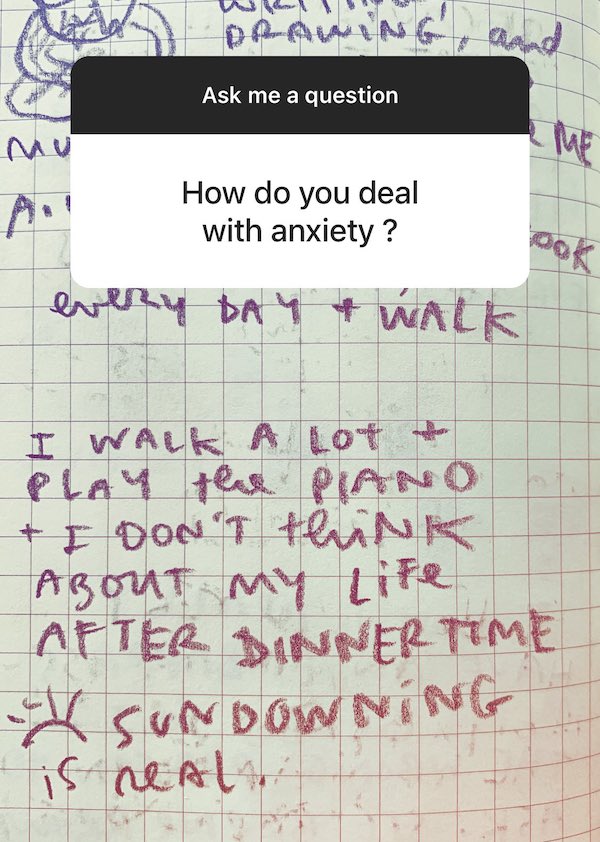
Q&As can also be a way of kind of summarizing mood and what folks are dealing with and what I might want to write about next. A lot of the questions were about depression and anxiety. (Here is more on my “very simple rule” for dealing with “sundowning.”)
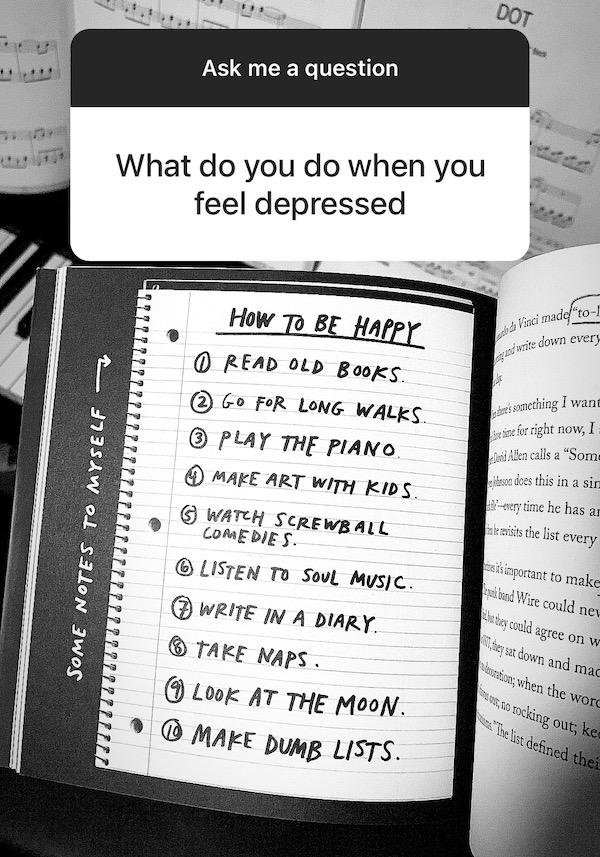
This list is from Keep Going.

I really want to write about this in a book.
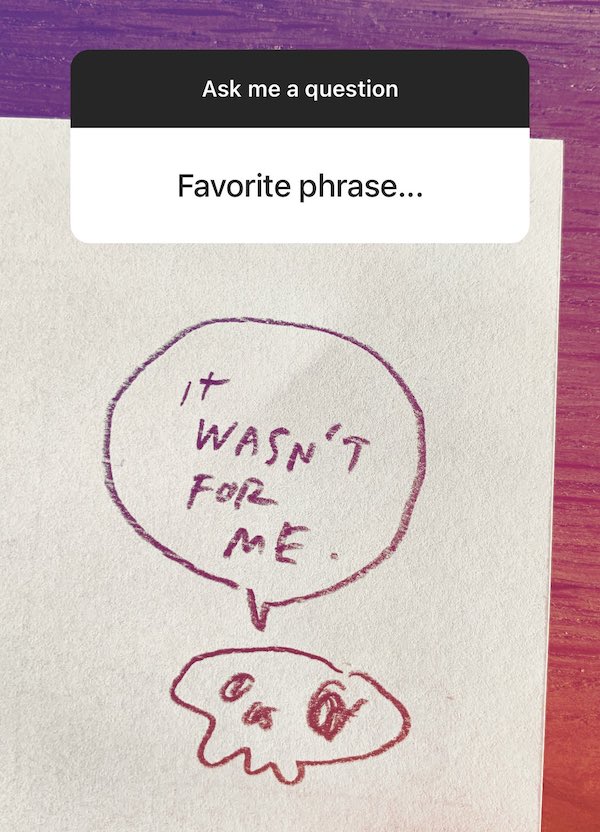
My favorite thing to say about stuff I don’t like.

Almost every answer in a Q&A is some form of “one day you’ll be dead” and “keep going.” (This, on obituaries, is from Show Your Work!)

I get a lot of questions about making art with kids. I should probably write a book on the subject, but until then, see my post, “The Pram in the Hall” and my “parenting” tag.
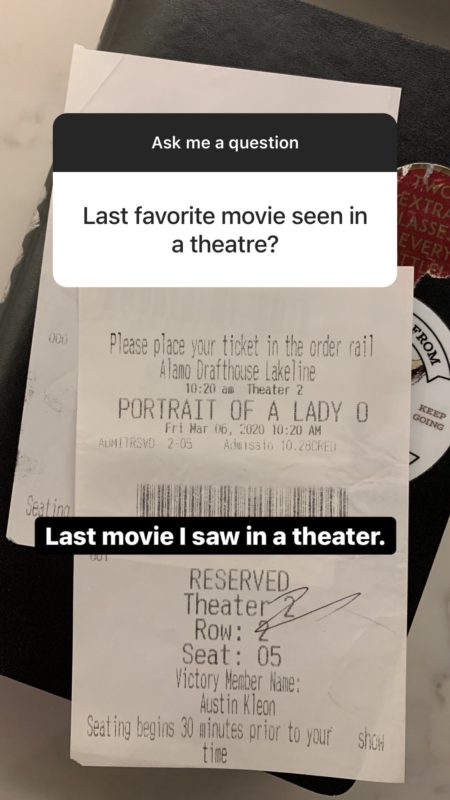
I miss movies.
* * *
If you liked this, consider joining our newsletter discussions!
My March pick for our Read Like an Artist book club is Oliver Burkeman’s Four Thousand Weeks. To join our discussion next month, sign up now.
Unboxing the latest for our @literati book club… pic.twitter.com/JD0oQFnPdw
— Austin Kleon (@austinkleon) March 1, 2022
Here’s my intro:
What will you do with the rest of your time?
What sounds like a straightforward self-help book is actually a deep reflection on the nature of time and how humans have historically dealt with it. “The average human lifespan is absurdly, insultingly brief,” Burkeman writes. “Assuming you live to be 80, you have just over four thousand weeks.”
Burkeman gives us permission to be imperfect, to forget about little tweaks and life hacks, and focus on the big things that matter. Freelancers, or creative people with weird schedules, might find comfort, as I did, in how difficult it is to make time off count when that time off isn’t shared by others.
I love how Burkeman is able to pull off the magic trick of writing self-help books that are, at their core, deeply suspicious of their own genre.
Four Thousand Weeks was one of my very favorite books I read in 2021. (His previous book, The Antidote, one of my favorite reads of 2013, was a big influence on my book Show Your Work!, which is the first book I consciously wrote knowing it’d be shelved in self-help.)
Here are some notes I took on the “The Principles of Patience” section of the book.
Oliver has agreed to chat with me online about the book in late March, so stay tuned for that!
To join our discussion, sign up for the club.
Today’s newsletter is about a subject near and dear to my heart: how writing and drawing are a form of thinking on the page.
This site participates in the Amazon Affiliates program, the proceeds of which keep it free for anyone to read.